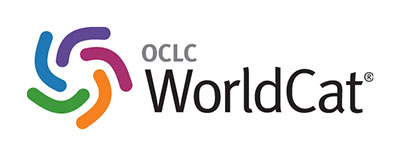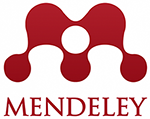LEVEL OF KNOWLEDGE ON THE USE OF FOURTH GENERATION ADHESIVES AND UNIVERSAL ADHESIVES IN STUDENTS OF THE X SEMESTER OF THE FACULTY OF DENTISTRY, UCSM,AREQUIPA 2021.
DOI:
https://doi.org/10.26871/killcanasalud.v6i3.1140Keywords:
Adhesives systems, adhesives from fourth generation, universal adhesives.Abstract
The general objective of this research is to compare the level of knowledge about the use of adhesives from fourth generation and universal adhesives that the students of the tenth semester have of the undergraduate degree of the UCSM School of Dentistry 2021. A quantitative, non-experimental, comparative cross-sectional research work was carried out. The study population was comprised of 85 students and all of them met the inclusion criteria, which answered the voluntary questionnaire that was previously validated by experts in the area. The statistical test applied for comparison was the U of Mann Whitney and for relation was the chi square test that was applied with a significance level of 5%. The results showed that for both adhesives from fourth generation (42,4%) and for universal adhesives (49,4%) the highest percentage of students achieved a regular level of knowledge, while the lowest percentage of students was constituted by high levels of knowledge (22,4) for adhesives from fourth generation and (21,2%) for universal adhesives. According to the statistical tests applied, it was determined there was not a significant statistical difference (P> 0.05), between the level of knowledge about the use of adhesives from fourth generation and universal adhesives that the students of the tenth semester have of the undergraduate degree of the UCSM School of Dentistry, therefore the null hypothesis was accepted.
Downloads
References
- Freedman G. Odontologia Estetica Contemporanea. Tomo I ed. Nueva York: Elsevier; 2015.
Buonocore M. Un método simple para aumentar la adherencia de los materiales de relleno acrílicos a las superficies de esmalte. J Dent Res. 2015 diciembre; 34(6): p. 849-53.
Silva e Souza M, Carneiro K, Lobato M, Silva e Souza P, Góes d, MF. Sistemas adhesivos: aspectos importantes relacionados con su composición y uso clínico. J Appl Oral Sci. 2010 mayo-junio; 18(3): p. 207-14.
Anusavice K. Ciencia de los materiales dentales. Onceava ed. España: Elsevier; 2004.
Gladwin MA, Bagby MD, Stewart M. linical aspects of dental materials: Theory, practice, and cases. sexta ed. Lippincott Williams & Wilkins.; 2004.
Toledano Perez M. Arte y ciencia de los materiales odontológicos Michigan: Avances Médico-Dentales; 2003.
Mercado Estrella DA. Nuevos sistemas adhesivos. Trabajo de Grado Previo a la Obtención del Título de Odontólogo. Guayaquil, Ecuador: Universidad de Guayaquil; 2018.
Steenbecker González O. Principios y bases de los biomateriales en operatoria dental estética adhesiva: propiedades, principios, fundamentos Valparaiso: Universidad de Valparaiso; 2006.
Tamayo Ortiz K. Conocimiento de estudiantes sobre el uso de sistemas adhesivos y su influencia en la sensibilidad dental postoperatoria. Tesis para título profesional. Riobamba:; 2020.
Sofan E, Sofan A, Palaia G, Tenore G, Romeo U, Migliau G. Classification review of dental adhesive systems: from the IV generation to the universal type. Annali di Stomatologia. 2017; 8.
Garroge A. Adhesión a tejidos dentarios. Revista Facultad de Odontología UBA. 2014; 5(13).
Cevallos Zamora KE. Adhesivos universales en odontología. Tesis para titulo profesional. Guayaquil: Universidad de Guayaquil; 2020.
Ramos Sánchez G, Calvo Ramírez N, Fierro Medina R. Adhesión convencional en dentina, dificultades y avances en la técnica. Rev Fac Odontol Univ Antioq. 2015 junio; 26(2): p. 468-486.
Roberson T, Sturdevant J, Heymann H. Arte y Ciencia, Operatoria Dental.Quinta ed. Madrid: Harcourt Brace; 1999.
Garrofé A, Martucci DPM. Adhesión a tejidos dentarios. Rev. Fac. de Odon. UBA. 2014; 29(12).
Hanabusa M, Mine A, Kuboki T, Momoi YVEA, Van Meerbeek B, De Munck J. Eficacia de unión de un nuevo adhesivo 'multimodo' al esmalte y la dentina. J Dent. 2012 Junio; 40(6): p. 475-84.
Gomes Moreira MA. Sistemas adhesivos autograbadores en esmalte: ventajas e inconvenientes. Av Odontoestomatol. 2004 agosto; 20(4): p. 193-198.
Scotti N, Cavalli G, Gagliani M, Vogel G, Breschi L. Nuevos adhesivos y técnicas de unión. ¿Por que y cuando? Journal Of Esthetic Dentistry. 2017 junio; 12(5)
Veneziani M. Restauraciones adhesivas indirectas posteriores: indicaciones actualizadas y la técnica de preparación basada en la morfología. Int J Esthet Dent. 2017; 12(2): p. 204-230.
Valencia Cruz RA. Nivel de conocimiento sobre adhesión de resina a dentina de los estudiantes de la clínica estomatológica de la Universidad Alas Peruanas filial Cusco en el año 2018. Tesis para optar el Título Profesional de Cirujano Dentista. Lima,: Universidad Alas Peruanas; 2018.
Naji Ziad A, Mohammad T. Conocimiento y actitudes de los dentistas hacia la selección del sistema adhesivo: un estudio transversal de Palestina. J Int Soc Prev Community Dent.. 2020 enero-febrero; 10










